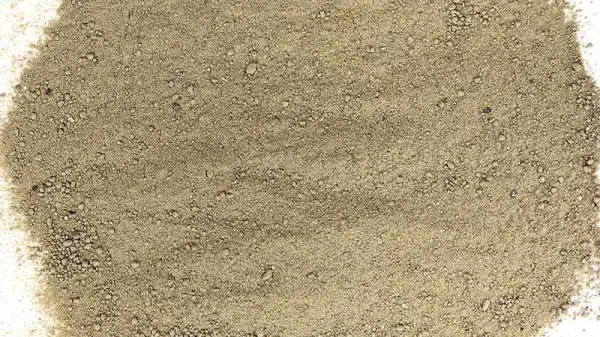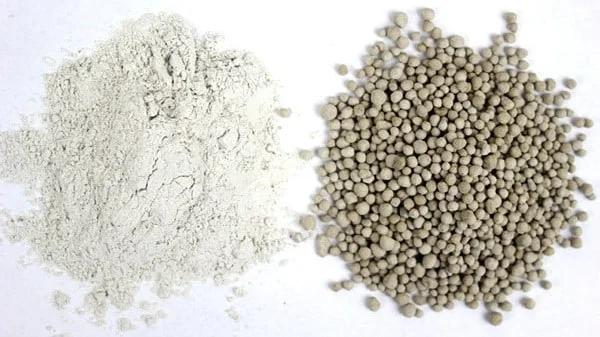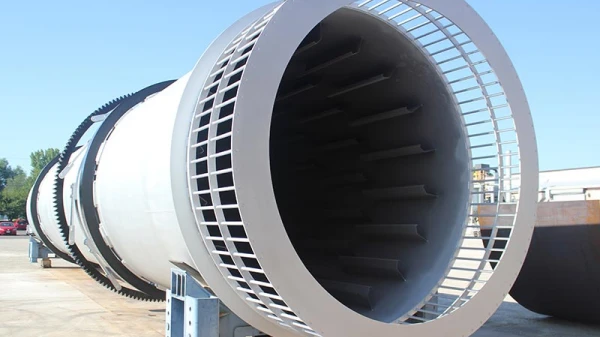Limestone drying, typically carried out in rotary dryers, is utilized throughout this industrial mineral’s lifecycle, from quarrying to finished product. The following explores why drying is essential for quality limestone, its role in production, key considerations, and the importance of testing and equipment design for a reliable drying process.
Why Dry Limestone?
Whether destined for use as a fertilizer, building material, or other use, quarried limestone may go through a range of different processes to prepare the material for its end use. Drying is one of the first and most critical steps, playing an integral role in allowing limestone producers to optimize their production lines, bring a salable product to market, and ensure their products meet customer expectations.
Settings Where Limestone Drying is Necessary
Depending on the end use of the limestone, drying may occur once or a few times throughout processing. The following applications are most common.
Mineral Processing
Drying is often one of the first steps after quarrying, preceded only by initial crushing and sorting in many cases. By preparing the material properly from the start, manufacturers ensure improved production at every stage.
Depending on the intended use of the product, a washing step may also be employed. Whether or not a washing step is employed, drying typically follows primary crushing as a way to improve downstream screening, sorting, and if applicable, fine grinding, all of which could otherwise be significantly hindered by a high-moisture material.
The moisture content of quarried limestone can vary significantly, ranging anywhere from 5% to 15% or higher. To meet market and downstream production requirements, limestone must typically fall within the range of 0.5% to 5% moisture content, though this, too, varies depending on the end use.

Dried, ground limestone
Benefits of Drying Limestone in the Mineral Processing Stage
Drying at this stage offers several benefits:
- Improved transportation and shipping economics
- Enhanced production line flow and reduced clogging of downstream equipment, especially screens
- More streamlined handling
- Less clumping and caking during handling and storage
- Assurance that limestone will meet market expectations for moisture content
When the resulting limestone is calcined, drying also helps to improve the efficiency of the calcination step; if moisture removal was not carried out prior to calcination, the kiln would have to be much larger to accommodate both moisture removal and calcination.
Pelletizing
Limestone is frequently pelletized into uniform granules with minimal dust. While this process can vary, the preferred approach in many cases is the combination of disc pelletizer, as this setup promotes a highly refined product with optimal appearance, handling, and performance qualities.
If limestone has been stockpiled outdoors, drying may also be necessary prior to pelletizing, in order to meet the feedstock requirements necessary for pellet formation.
During the pelletizing process, a liquid binder is used to facilitate agglomeration, as well as aid in end product crush strength. As a result of this moisture addition, a drying step becomes necessary.
Drying at this stage is a finishing step used to bring the product into the moisture content required by its intended application.
Benefits of Drying Limestone After Pelletizing
While drying is a necessary part of the pelletizing process, it also offers a few benefits:
- Improved product shelf life
- Reduced potential for product caking
- More polished, refined granules (when carried out in a rotary dryer)

Limestone before and after pelletizing and drying
Limestone Dryers
Limestone drying may be carried out in different types of industrial drying equipment, with the most common being rotary dryers, followed by fluid bed dryers.
Rotary Dryers
Thanks to their heavy-duty build and high throughput, rotary dryers offer ideal processing capabilities in both mineral dressing and pelletizing settings when processing limestone.
Additionally, the rotating motion paired with lifting flights that create a “curtain” or cascading action of material ensures that the material is properly and evenly dried.
Rotary dryers are also favored particularly in rock drying settings because of their tolerance to variation in feedstock parameters such as moisture content, particle size distribution, and more. While feedstock should always be as uniform as possible, rotary dryers do not experience disruptions due to slight variations in material and generally produce a uniform result.
Rotary dryers also offer a high level of opportunity for customization, which can sometimes be critical in designing for specific sources of limestone. Common customizations and modifications include:
- Co-current or counter-current design
- Incorporation of a combustion chamber
- Custom inlet/feed area design
- Customized flight design and pattern
- Thicker shells for abrasion resistance
- Use of alternative materials of construction
- Special burner options that limit emissions such as NOx and CO
- Knockout chamber (discharge breeching) design
- Seal options
Material Considerations When Drying Limestone
As with any material, limestone presents its own unique set of challenges when it comes to drying. Chief among them are limestone’s abrasive quality and its potential for clumping, both of which must be addressed during initial dryer design.
Abrasion
The extent of limestone’s abrasive quality can vary from one source to the next, but all should be addressed through the proper selection of materials of construction. Preparing for abrasion is especially important during the initial mineral processing stages, when particle sizes are larger and have the potential to inflict more damage.
Depending on the extent of abrasion, abrasion-resistant steel may be necessary for the entire drum shell, as well as flight construction.
Clumping
Limestone is also prone to clumping, particularly at higher moisture contents. As clumping progresses to buildup, it can cause a number of issues and must be minimized through careful dryer design.
Rotary dryers offer several approaches to minimize clumping and buildup:
- The incorporation of a “bald” or flightless section at the dryer inlet, which allows for some moisture reduction prior to the introduction of flights.
- The integration of knockers on the drum’s exterior to dislodge any potential buildup.
- The addition of a trommel screen or “grizzly” on the discharge end to break up any clumps that may have formed during drying.

Rotary dryer with trommel screen/grizzly (flights can also be seen)
Conclusion
Drying plays an integral role in limestone processing, with a significant impact on the quality and efficiency of the final product. From the early stages of mineral processing to the final step of pelletizing, tight control of moisture content ensures that limestone products meet the stringent requirements of their specific applications. Rotary dryers are uniquely positioned to provide the flexibility and customization necessary to handle the complexities of limestone drying. By addressing key material challenges such as abrasion and agglomeration, as well as optimizing process variables, producers can achieve reliable, high-quality drying operations.
EMCC is a preferred supplier of limestone dryers because, in addition to the industry’s most renowned dryers, we offer comprehensive solutions that extend far beyond equipment. Our process development services at the EMCC Innovation Center allow us to tailor drying processes to the unique needs of each limestone source, ensuring optimal performance and product quality. Additionally, EMCC offers extensive parts and service support, providing the necessary expertise and resources to ensure your operation runs smoothly and efficiently. With decades of experience in designing and manufacturing custom limestone dryers, EMCC is committed to providing reliable, high-quality solutions that meet your production process needs from start to finish. To learn more about EMCC’s extensive knowledge of any stage of limestone processing, contact us today!
